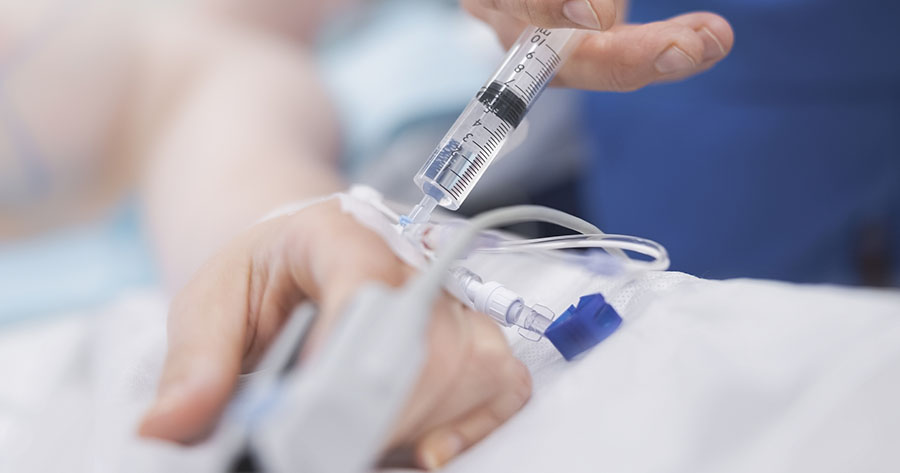The NHS White Paper Equity and Excellence: Liberating the NHS (Department of Health [DH], 2010) explicitly recommends that patients should be fully involved in their care and work in partnership with clinicians to shape local services. There is evidence that this leads to improvements in patient satisfaction, adherence, and outcomes (Bechel et al, 2000; Fremont et al, 2001).
At St Helens and Knowsley Teaching Hospitals NHS Trust, the diabetes team aim to run a structured, evidence-based, patient-centred diabetes service and over the last 10 years has actively engaged with local users to ensure their input into how the service is delivered. The diabetes team works in partnership with a well-established diabetes focus group on many issues relating to local diabetes service delivery. In addition, in 2009 the team established a second patient group, for people who were either using multiple daily injection (MDI) and carbohydrate counting or insulin pump therapy (continuous subcutaneous insulin infusion [CSII]). The aims of this group were to provide a forum of ongoing peer support and to function as a second group working in partnership with us to shape local diabetes services, with a particular focus on type 1 diabetes.
In this article, the authors outline how they worked collaboratively with this additional group of patients to establish a structured Pump Advanced Carbohydrate Education (PACE) programme. They also demonstrate that the ambitious target of clinicians working in partnership with patients set out in the NHS White Paper is achievable in routine clinical care.
Structured carbohydrate education: The evidence
Diabetes patient education has been recognised as the cornerstone of effective management for decades (Assal et al, 1985), but its delivery was widely neglected until the National Service Frameworks (NSFs) for diabetes were published. The NSF for Diabetes: Standards (DH, 2001), NSF for Diabetes: Delivery Strategy (DH, 2003) and Guidance on the Use of Patient-education Models for Diabetes (NICE, 2003) specify that all health districts must offer structured education programmes for people with diabetes at diagnosis and ongoing. Indeed, the Structured Patient Education in Diabetes: Report from the Patient Education Working Group (DH and Diabetes UK, 2005) stated that as part of Standard 3 of the NSF, structured diabetes patient education must be provided by all primary care trusts by 2006.
The evidence-base for structured type 1 education (including carbohydrate counting education) remains varied, and further long-term research is required. NICE (2003) identified four studies satisfying its criteria for controlled trials examining effectiveness of education for people with type 1 diabetes. However, three of these studies tested the effect of intensified insulin treatment that included an educational component, and therefore it was not possible to assess the impact of the education.
One such study by the DAFNE (Dose Adjustment for Normal Eating) Study Group (2002) did not include a control group and therefore was not included in the NICE evaluation, but demonstrated a 1.0% (10.9 mmol/mol) improvement in HbA1c level in the intensive education/treatment arm after 6 months and compared with the delayed education arm (receiving usual care for the first 6 months and then intensive training/treatment after that time). At 1 year, the improvement from baseline in HbA1c level in the intensive arm had diminished to 0.5% (5.5 mmol/mol). However, it was not possible to deduce whether the observed improvement in glycaemic control was a result of education or more intensive insulin treatment.
Despite being supportive of the importance of diabetes patient education and recommending its universal introduction in the UK, NICE reported that robust evidence is lacking. However, since the publication of the NICE guidance in 2003 there has been a great increase in the number of centres across the UK offering structured education for people with type 1 diabetes and a national education network Diabetes Education Network (DEN) has been established to offer a quality assurance framework.
The Insulin and Carbohydrate Education programme
Although many centres in the UK have chosen to deliver the DAFNE programme for type 1 diabetes education, many others develop their own programme. The team chose to pursue their own programme because they were keen to work with local users and shape the programme around their needs and their input.
The Insulin and Carbohydrate Education (ICE) course was based on the Bournemouth Type 1 Intensive Education (BERTIE) programme, a course that was based on the Dusseldorf model of the DAFNE programme (Jörgens et al, 1993; Müller et al, 1999). Rather than a 5-day intensive course, BERTIE was adapted to be delivered once per week over 4 weeks, which the ICE course followed.
The team has been running the ICE course since 2006, with up to six courses per year and offer the programme to anyone with type 1 diabetes wishing to intensify their management with MDI and carbohydrate counting. Approximately 70 people attend per year. The ICE course is extremely popular and has been associated with improvements in HbA1c, hypoglycaemia and quality of life (Srinivas-Shankar et al, 2008).
The programme meets the NICE (2003)criteria for structured education and the team has developed a quality assurance programme in line with recommendations by the DEN (see www.diabetes-education.net). Quality assurance has three components of assessment:
- By trained educators, who undertook an initial 2-day course).
- Ongoing internal examination in which educators complete a reflective self-assessment tool after each course, based on the DEN (2007) tool. Annual peer review is also carried out by another educator within the diabetes team.
- External examination, carried out every 3 years by an educator from another centre to audit internal quality assurance processes and observe course sessions to ensure that the curriculum is being delivered.
In 2006, the team established a CSII service and has highly recommended that anyone wishing to be considered for CSII therapy should first complete the ICE course.
How did PACE develop?
The evaluations for each ICE course have been very positive and one of the key benefits to those attending has been meeting other people with type 1 diabetes and the peer support this generates. Based on this feedback, in 2009, the team established a support group for those who had completed ICE, and their carers. As a significant number of those completing ICE had progressed to CSII therapy, the invitation was extended to everyone on an insulin pump. The aim of the group is to share experiences and ideas. The group meets every 2–3 months and the informal sessions are facilitated by the lead nurse for CSII and the lead nurse for ICE.
The team used this group to evaluate the CSII service. In a discussion on how it could be developed it was suggested that ongoing structured education for CSII users in a similar format to ICE would be useful. It is recognised that there is a need for ongoing education and the need for education refreshers for patients using CSII therapy and that these should be offered on an annual basis (DH, 2007).
Using the ICE curriculum and the participant feedback, PACE was established with the aim of updating CSII users on carbohydrate counting, insulin dose adjustment and optimising advanced features of CSII therapy. PACE has been successfully incorporated into routine care as of February 2010.
Curriculum
The PACE programme is underpinned by a social constructivist model of learning (Vygotsky, 1962), which involves students working together to “construct” a new understanding based on existing knowledge and new experience. The course is exemplified by the following features:
- Learning is experiential and builds on previous and current experience.
- Learning is active and didactic teaching is minimised. The aim is that participants acquire new knowledge and the understanding of how it applies to their daily lives.
- Learning is applied and early application of knowledge to real-life problems is emphasised.
- Learning is reflective and this is applied in assessment strategies.
- Learning is collaborative – patients are encouraged to solve problems together and to make use of their facilitator.
The aim is to enhance self-efficacy and for participants to become more successful and confident in setting their individual goals.
The course runs once per week over 4 consecutive weeks, each session lasting 4 hours with groups of approximately five to 10 people. The sessions are facilitated by the lead nurse for ICE, the lead nurse for CSII therapy and the advanced diabetes dietician who are all trained educators. The team run approximately four courses per year.
Participants’ feedback
Owing to the short time-frame that the PACE course has been in existence, it is too early to assess formal outcomes; however, feedback so far has been positive. Some comments obtained from participant evaluation include:
“I found the course really useful and a great motivator… I could do with a session every week.”
“I think this should be available every 12 months for patients on the pump.”
“Helped and inspired me to achieve my goals.”
Conclusion
Despite lack of robust evidence in diabetes structured education, there remains a need to drive improvements in providing structured education for all people with diabetes. A variety of diabetes educational programmes are continually being established; however, the PACE programme has incorporated aspects that are high on the Government’s agenda to ensure that patients are involved in decision making, while boosting satisfaction and the overall experience of the service.
At the St Helens and Knowsley Teaching Hospitals NHS Trust diabetes centre, PACE has now successfully been incorporated into routine care and the authors have found demand for the course to be high, non-attendance low and feedback extremely positive. There have been few limitations to running the course and presently through quality assurance and feedback review it remains effective and well-delivered.
The authors demonstrate that PACE is a good example of effective patient–provider collaboration to shape local services. This work highlights the importance for people with diabetes to have access to ongoing structured education and peer support.





The risk factors and what might be done to address them.
24 Mar 2025